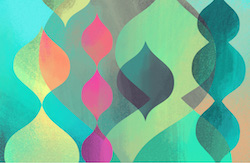

 Maya Kedem lives with her Labrador Retriever dog Jack, brother Dean, and parents in New York. She has a YouTube account where she posts shorts about her Roblox game that is and will always be a work in progress.
Maya Kedem lives with her Labrador Retriever dog Jack, brother Dean, and parents in New York. She has a YouTube account where she posts shorts about her Roblox game that is and will always be a work in progress.
A lot of people don’t know what cryptography is or what ciphers are; do you? As a brief overview, cryptography is encoding messages, whether in the form of pictures, online messages, or paper messages. […]
A lot of people don’t know what cryptography is or what ciphers are; do you? As a brief overview, cryptography is encoding messages, whether in the form of pictures, online messages, or paper messages. It can take the form of symbols translating for letters or scrambling up words, as one might sometimes do without thinking, like children constructing a made-up language. In this essay I will show you how, contrary to some people’s opinions, cryptography was important in ancient society and continues to be helpful in modern society. I will mainly talk about two ideas: how cryptography was used in “ancient times” like in World War II and how common script uses cryptography in its base as coding for privacy.
Imagine you are a war leader. Whether you lead an army of men in 44 BC, or sneak attacks and bombs on enemy territories in 1940, your tactics must be kept secret from prying eyes. One way that secrecy was protected was with encoding messages or cryptography. Viewers of an informational video by the World Science Fair channel on YouTube can hear a detailed explanation of World War II’s Enigma Machine, a cryptography machine that made and decoded code. The video demonstrates how vital cryptography was to both sides of the war effort. If a message was leaked, a whole attack could be jeopardized, or saved. When the opposing side found the code, it would mean the end of a whole branch of communication. Since radios allowed messages to be sent over great distances, using cryptography to send messages became a crucial means for sharing coded information. In the video, Simon Singh states, “Encryptions are important because if you’re going to send messages you need to make sure those messages aren’t necessarily going to be intercepted and stolen.” Radio became that missing piece of the puzzle for securing the messages. Soldiers no longer had to worry about messenger pigeons being physically intercepted; now you worried about the enemy finding your radio signal and hearing it in broad electromagnetic wave light. The Enigma Machine was made in Germany. The Germans would have someone send what the setting or “key” would be, then the machine would scramble the typed letters into different letters; it is a simple enough process but very confusing without the machine. The letters to send would light up, and for the process in reverse, you could decode the messages through the same setting in the machine. Errors were possible, but it was a much safer way to send messages than the alternative, and therefore the Germans’ best shot.
Speaking of best shots, technology has advanced to become more calculated, but more at risk. Encryption has originally been used to make codes, but also for privacy. While this is very advanced and secure with technology and an understanding of code, one could break through the encryption, which is why it must be secure and top secret. The code is so random that no one knows it; only a randomly generated string of numbers holds your latest browser search from being blackmailed. Not every company does this, nor should you be concerned. There is actually comfort in this random string. The possibilities are endless, practically, so unless one stumbles upon your set of code, it is most likely it is a dead person’s code or invalid. Even then, that is only one step of many towards good encryption. As Khan Academy’s video on cryptography mentions, it is generally safe, but there are ways to interfere, and “the more steps and parts there are, the more complicated it is.” As a rough rule highlighting how cryptography has impacted technology, more complex code usually results in fewer errors smoother computers.
While this essay might be short, there’s more to sort. In the sources list you will find the videos mentioned, to continue your cryptography search, sadly this is no verse. Past and old, present and current, future and new all have you. I leave you with the same question I started with; a lot of people don’t know what cryptography is or cyphers are. Do you?
Sources:
|
|